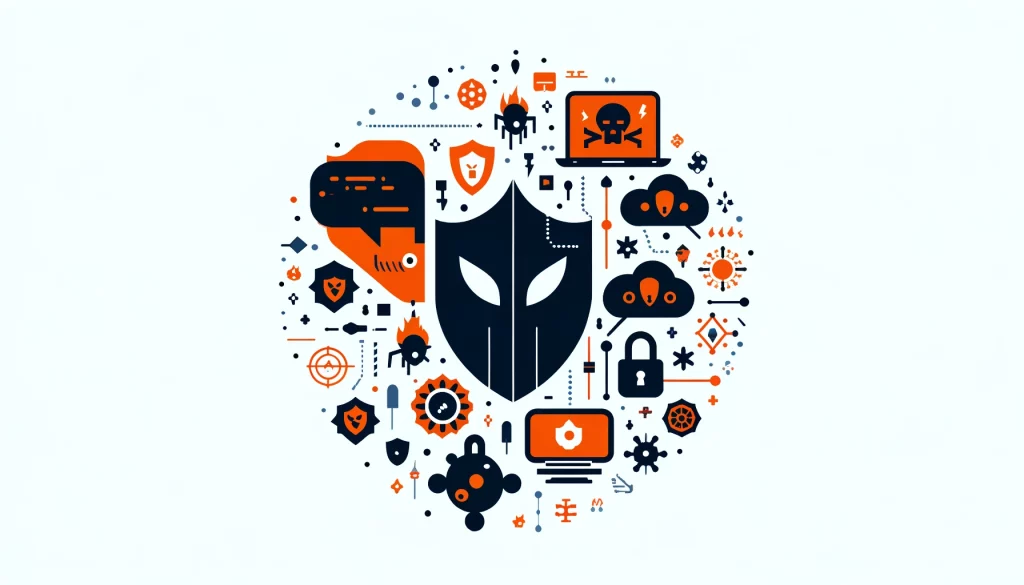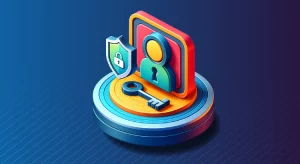
What Are Cyber Attacks? Types, Motivations, and How to Protect Against Them

A cyber attack is when hackers try to harm, disrupt, or access computers, networks, or systems without permission. Individuals or groups can carry out attacks from anywhere using different tactics. Cybercriminals, also known as threat actors or hackers, try to exploit weaknesses in systems for different reasons.
Cyber attacks can have far-reaching implications, impacting everything from personal data to national security. The motivations behind these attacks are diverse. Some cyber criminals seek financial gain by stealing sensitive information, such as credit card numbers or banking details. Others, known as hacktivists, attack to promote social or political causes.
Some countries conduct cyber attacks to disrupt operations, gather intelligence, or undermine confidence in critical infrastructure. These attacks are part of broader cyber warfare operations.
The Evolution of Cyber Attacks
Cyber attacks have evolved significantly over the years. Early cyber attacks were often simple, targeting easily accessible systems with minimal security. As technology advanced, so did the sophistication of cyber attacks. Today, criminals use advanced techniques to bypass security measures, making it challenging to detect and prevent attacks.
The internet and digital systems have made cyber attacks more common and harmful. Modern cyber attacks often involve multiple stages, from reconnaissance and intrusion to data exfiltration and exploitation. Attacks can target specific people or groups, or affect many victims at once without discrimination.
Cyber Attack Motivations
Cybercriminals have various reasons for launching attacks. Financial gain is a primary motivation, with attackers seeking to steal money or valuable information. Ransomware attacks happen when hackers lock up someone’s data and ask for money to unlock it. These attacks are often for money.
Hacktivism is another motivation, where attackers promote social or political causes. Hacktivists are attackers who target government agencies, corporations, or other entities that they disagree with. They have strong beliefs and objectives. Hacktivist attacks can involve changing websites, leaking data, or disrupting services to raise awareness for their cause.
Nation-states also engage in cyber attacks as part of cyber warfare operations. These attacks aim to disrupt the operations of other countries, gather intelligence, or undermine confidence in critical infrastructure. Country attacks can be sophisticated and well-funded. They deploy APTs that can remain hidden in a network for an extended period without detection.
Cyber Attack Statistics
The cost of cyber attacks is rising, with global expenses expected to grow by 15% per year, reaching over $10 trillion by 2025. Ransomware attacks alone cost US businesses $20 billion annually. Data breaches in the US cost an average of $3.8 million. Public companies typically lose 8% of their stock value after a breach.
Organizational Preparedness
Despite the rising threat, many organizations are not adequately prepared for cyber attacks. A survey revealed that 78% of companies believe their security measures need improvement. Alarmingly, 43% of small businesses have no cyber defenses. There aren’t enough security professionals globally, with 3.5 million open jobs worldwide, including 500,000 in the US.
Notable Cyber Attacks
Several high-profile cyber attacks in recent years highlight the growing threat:
- In July 2021, the REvil group used weaknesses in Kaseya’s software to infect many companies with ransomware. The attack used several new vulnerabilities discovered in Kaseya’s VSA product. The hackers pushed the malware to customers through a fake software update labeled “Kaseya VSA Agent Hot Fix.”
Kaseya stated that the attack only impacted a few of their customers. However, the incident still caused harm to many service providers and their customers. The REvil ransomware infected approximately 800 to 1500 companies. REvil ransomware infected around 800 to 1500 companies.
- A large and creative supply chain attack on SolarWinds occurred in December 2020. Threat actors injected malware, known as Sunburst or Solorigate, into an update for SolarWinds’ Orion software platform.
SolarWinds sent the hacked update to its customers. This affected many US federal agencies. These agencies are responsible for nuclear weapons, essential services, and large companies.
- A DDoS attack hit Amazon Web Services (AWS) in February 2020. The attack peaked at 2.3 terabits per second. The packet forwarding rate was 293.1 million packets per second.
- The request rate was 694,201 per second. This significant DDoS attack demonstrated the extensive harm such attacks can inflict, resulting in significant disruptions.
- In March 2021, a cyber attack hit Microsoft Exchange, a widely used email server for businesses. Hackers used four unknown security flaws to create fake links, get into Exchange Server, and put harmful software. The attack, which enabled remote code execution (RCE), compromised sensitive information, deployed ransomware, and created backdoors on affected servers. The assault impacted nine government departments and more than 60,000 private companies solely in the United States.
Twitter Celebrities Attack: In July 2020, hackers broke into Twitter by tricking employees to steal their login information. Hackers breached the company’s systems. The hackers gained control of important Twitter accounts.
These accounts included those of Barack Obama, Jeff Bezos, and Elon Musk. The culprits utilized these profiles to propagate bitcoin frauds, amassing over $100,000. Three individuals were indicted by the US Department of Justice, including a 17-year-old.
Common Types of Cyber Attacks
Cyber attacks come in various forms, each with unique characteristics and impacts:
Ransomware
Ransomware encrypts files and demands a ransom for their release. This type of attack is highly prevalent and dangerous. If a system gets infection, the victim must pay a ransom or restore files from backups to unlock encrypted files. In many cases, paying the ransom does not guarantee the recovery of data, and it may encourage further attacks.
Malware
Malware encompasses a range of harmful software designed to damage or steal information from systems. Typical kinds of malware encompass:
- Botnet Malware: Incorporates compromised systems into a botnet, enabling hackers to exploit them for illicit activities.
- Cryptominers: Use the target’s computer to mine cryptocurrency.
- Info-harvesters: Gather confidential data from the victim’s PC.
- Financial Trojans: Pilfer monetary and login details for banking portals.
- Mobile Threats: Aim at mobile gadgets through applications or text messages.
- Rootkits: Provide the intruder with total command over a gadget’s operating system.
DoS and DDoS Attacks
Denial-of-service (DoS) attacks overwhelm the target system with traffic, causing it to deny service to legitimate users. Distributed denial-of-service (DDoS) attacks involve multiple host machines, amplifying the impact. Hackers use these attacks for sabotage or as a diversion for other malicious activities.
Phishing and Social Engineering
Social engineering attacks rely on human interaction, tricking individuals into granting attackers sensitive information or access. Phishing attacks trick people into giving away information or downloading harmful software by pretending to be from trustworthy sources. Spear phishing targets specific individuals, such as executives or network administrators, with carefully crafted messages.
MitM Attacks
Man-in-the-Middle (MitM) attacks intercept and alter communications between two parties without their knowledge. Attackers can spy on the communication or modify messages before forwarding them to the intended recipient. Strong encryption and secure access points can mitigate MitM attacks.
Fileless Attacks
Fileless attacks exploit applications already installed on a user’s device, avoiding detection by traditional antivirus tools. These attacks often use legitimate operating system tools like PowerShell and Windows Management Instrumentation (WMI) to inject malicious code.
Preventing Cyber Attacks
Organizations use various tools and strategies to prevent cyber attacks:
Web Application Firewalls (WAF)
WAFs analyze HTTP requests to detect and block malicious traffic, protecting web applications from common vulnerabilities. They can block attacks before they reach the application, complementing traditional firewalls and intrusion detection systems.
DDoS Protection
DDoS protection solutions safeguard networks or servers from denial-of-service attacks. These solutions can be on-premises equipment or cloud-based services. Cloud services are important for stopping DDoS attacks. They can grow as needed to handle many bad requests.
Bot Protection
Bot protection systems detect and block malicious bots while allowing legitimate ones to perform their activities. These systems use databases of known bot sources and behavior patterns to identify and mitigate bad bots.
Cloud Security
Cloud security solutions protect data and workloads in the cloud. These solutions offer more security than cloud providers, allowing users to better control and manage their cloud setups.
Safeguarding Databases
Securing databases entails strengthening database servers, setting up access restrictions and encryption, and vigilantly watching for harmful activities. Database security solutions help prevent excessive privileges, unpatched vulnerabilities, unprotected sensitive data, and database injection attacks.
API Security
APIs facilitate communication between applications and systems. API security measures, such as strong authentication, token usage, data encryption, and input sanitization, protect APIs from attacks. API security solutions centralize the enforcement of these measures.
Threat Intelligence
Threat intelligence supports security teams by providing information on threat actors, attack tactics, and known vulnerabilities. This smart technology helps organizations find and stop cyber attacks before they happen by detecting and stopping known threats.
Cybersecurity Best Practices
Organizations must implement a comprehensive approach to security to effectively prevent cyber attacks. Best practices include:
- Regular Security Assessments: Conduct regular assessments to identify vulnerabilities and ensure security measures are up-to-date.
- Employee Training: Educate employees about security threats and best practices to minimize human error and susceptibility to social engineering attacks.
- Incident Response Planning: Develop and regularly update incident response plans to ensure a quick and effective response to security incidents.
- Network Segmentation: Segment networks to limit the impact of a breach and prevent lateral movement of attackers within the network.
- Multi-Factor Authentication (MFA): Implement MFA to add an extra layer of security for user authentication, reducing the risk of unauthorized access.
- Patch Management: Regularly update and patch software to address known vulnerabilities and reduce the attack surface.
- Data Encryption: Encrypt sensitive data both at rest and in transit to protect it from unauthorized access.
- Access Control: Use strict access rules to limit user privileges. Only authorized personnel should access important systems and data.
- Security Monitoring: Monitor networks and systems for signs of suspicious activity or potential security incidents.
- Backup and Recovery: Backup your important data and systems regularly to protect against ransomware attacks or data loss.
The Future of Cybersecurity
As technology advances, organizations will face new threats and challenges in cybersecurity. Emerging technologies, such as artificial intelligence (AI) and machine learning (ML), offer new opportunities for enhancing cybersecurity defenses. AI and ML can help analyze large amounts of data, find irregularities, and forecast possible dangers before they happen.
These technologies have new risks. Criminals can use AI and ML to create more advanced attacks. More IoT devices and 5G networks mean more ways for hackers to attack. We need to fix these new vulnerabilities.
Organizations must stay vigilant and adapt. This includes investing in advanced security technologies, updating security policies and procedures, and fostering a culture of security awareness and preparedness.
Conclusion
Cyber attacks are a serious and growing threat to organizations worldwide. Understanding the different types of attacks and their potential impacts is crucial for developing effective defenses. Investing in cybersecurity tools and strategies helps organizations protect themselves from threats and reduce the risk of a breach.
Successful security needs a complete strategy. This includes regular assessments and employee training. It also involves incident response planning and network segmentation. Additionally, multi-factor login and patch management are crucial.
Data encryption, access control, security monitoring, and backup and recovery are also important components. As technology improves, organizations must be vigilant and adapt to new risks to safeguard their systems and information.
